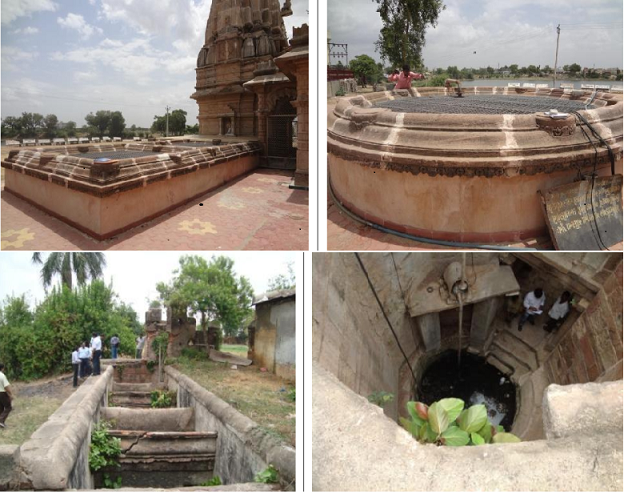Jal Mandirs of Gujarat
Jal Mandirs of Gujarat
Background
Gujarat is a seasonally arid State. Rains persist for three months and leaving the surface dry for the remaining nine months in the State. Several hundred step - wells were built in the towns and villages of Gujarat for managing and mediating the water resources. The grandest period of step - well construction spanned half a millennium -- from the late eleventh through the sixteenth century -- dotting the countryside with exquisitely embellished public monuments, the most extravagant of which is the 'Rani ki Vav', or Queen's Step - well, at Patan, Gujarat which has recently been recognised as UNESCO heritage structure.
Jal Mandir Systems
Jal Mandirs or step - wells, also called Vav in Gujarati, are wells in which the water can be reached by descending a set of steps. They may be covered and protected, and are often of architectural significance. It can be multi - storied also, in which a bullock turns the water wheel ("Rehant") to raise the water in the well to the first or second floor. A basic difference between step - wells on the one hand, and tanks and wells on the other, was to make it easier for people to reach the ground water, and to maintain and manage the well. Builders/ masons dug deep trenches into the earth for dependable, year - round groundwater. They lined the walls of these trenches with blocks of stone, without mortar, and created stairs leading up to the water. The step - wells provided easy access to the water for general public for various purposes e.g. drinking, bathing, performing religious rituals etc.
The Vavs or Jal Mandirs (step - wells) of Gujarat consist of two parts: a vertical shaft from which water is drawn and the surrounding inclined underground passageways, chambers and steps which provide access to the well. The galleries and chambers surrounding these wells were often carved profusely with elaborate detail and became cool, quiet retreats during the hot summers for local public as well as the travellers. Owing to its delightful qualities and lucid design; the stone step - well remained the state of the art in Indian water management for more than a thousand years. With increasing population, the demand of water for domestic as well as irrigation has increased manifold resulted gradual shift towards deep tube wells and bore wells thereby neglected these traditional water abstraction structures for a long period.
Source of water
These step wells are generally dependent on the recharge from nearby surface water sources viz. village ponds, streams, canals and in some cases nearby rivers. The location of these ancient wells found to be unique in the sense that even during dry period of the year most of these wells have water in them, highlighting the ancient wisdom of craftsmen in those days. Most of these wells are part of phreatic aquifers of various formations such as alluvial, basaltic, phyllite etc.
Benefits
The concept of Jal - Mandirs may be very useful in those areas where Groundwater table is high and no assured supply schemes are available viz. Tube well/Municipal supplies. Replication of this concept in such areas appears advantageous. In the absence of electricity in those times, the step - wells were a reliable source of ground water for the population, travellers, and princely armies on - the - move. The concept is innovative especially from the point of view of sustainability of village water supply system by inculcating the sense of responsibility among people and motivating them towards maintaining the system by attaching social and religious facets to it which is vital for water conservation.
Conclusion
Considering water conservation and sustainability of village water supply systems in many parts of the country, the Jal Mandir concept can be replicated in rest of the country especially in water scarce rural areas. In the absence of perennial recharge system, rainwater harvesting from village area can be useful for recharge of village water supply arrangements such as Dug - wells, Tube - wells, etc. The integrated concept of Jal Mandir for village water supply and sanitation can be implemented. The wastewater can be suitably used after treatment for recreation and gardening purpose in Jal Mandir area.
Examples of Jal Mandirs
- Khodiayar Mata ki Vav - Location Vill : Bareja, Tal : Daskroi, Dist : Ahmedabad
- Tintoi Jal - Mandir - Location Vill : Tintoi , Tal : Modasa , Dist : Aravalli
- Kohivav Jal - Mandir - Location Vill : Motimori , Tal : Meghraj , Dist : Aravalli

Source:Portal Content Team
Last Modified : 4/1/2020
This topic provides information regarding the Guja...
Bhasha Sangam initiative for schools and educatio...
This topic covers the Information related to Conse...
This topic provides information about Be Internet ...
